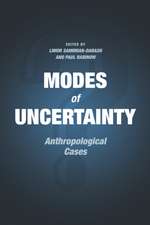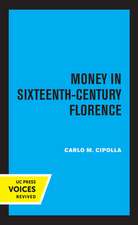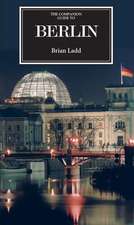The Streets of Europe: The Sights, Sounds, and Smells That Shaped Its Great Cities
Autor Brian Ladden Limba Engleză Hardback – sep 2020
A multi-sensory urban history of Europe’s bustling streets.
Merchants’ shouts, jostling strangers, aromas of fresh fish and flowers, plodding horses, and friendly chatter long filled the narrow, crowded streets of the European city. As they developed over many centuries, these spaces of commerce, communion, and commuting framed daily life. At its heyday in the 1800s, the European street was the place where social worlds connected and collided.
Brian Ladd recounts a rich social and cultural history of the European city street, tracing its transformation from a lively scene of trade and crowds into a thoroughfare for high-speed transportation. Looking closely at four major cities—London, Paris, Berlin, and Vienna—Ladd uncovers both the joys and the struggles of a past world. The story takes us up to the twentieth century, when the life of the street was transformed as wealthier citizens withdrew from the crowds to seek refuge in suburbs and automobiles. As demographics and technologies changed, so did the structure of cities and the design of streets, significantly shifting our relationships to them. In today’s world of high-speed transportation and impersonal marketplaces, Ladd leads us to consider how we might draw on our history to once again build streets that encourage us to linger.
By unearthing the vivid descriptions recorded by amused and outraged contemporaries, Ladd reveals the changing nature of city life, showing why streets matter and how they can contribute to public life.
Merchants’ shouts, jostling strangers, aromas of fresh fish and flowers, plodding horses, and friendly chatter long filled the narrow, crowded streets of the European city. As they developed over many centuries, these spaces of commerce, communion, and commuting framed daily life. At its heyday in the 1800s, the European street was the place where social worlds connected and collided.
Brian Ladd recounts a rich social and cultural history of the European city street, tracing its transformation from a lively scene of trade and crowds into a thoroughfare for high-speed transportation. Looking closely at four major cities—London, Paris, Berlin, and Vienna—Ladd uncovers both the joys and the struggles of a past world. The story takes us up to the twentieth century, when the life of the street was transformed as wealthier citizens withdrew from the crowds to seek refuge in suburbs and automobiles. As demographics and technologies changed, so did the structure of cities and the design of streets, significantly shifting our relationships to them. In today’s world of high-speed transportation and impersonal marketplaces, Ladd leads us to consider how we might draw on our history to once again build streets that encourage us to linger.
By unearthing the vivid descriptions recorded by amused and outraged contemporaries, Ladd reveals the changing nature of city life, showing why streets matter and how they can contribute to public life.
Preț: 201.93 lei
Nou
Puncte Express: 303
Preț estimativ în valută:
38.64€ • 40.49$ • 31.94£
38.64€ • 40.49$ • 31.94£
Carte disponibilă
Livrare economică 21 martie-04 aprilie
Livrare express 06-12 martie pentru 31.77 lei
Preluare comenzi: 021 569.72.76
Specificații
ISBN-13: 9780226677941
ISBN-10: 022667794X
Pagini: 320
Ilustrații: 60 halftones, 4 maps
Dimensiuni: 152 x 229 x 28 mm
Greutate: 0.57 kg
Ediția:First Edition
Editura: University of Chicago Press
Colecția University of Chicago Press
ISBN-10: 022667794X
Pagini: 320
Ilustrații: 60 halftones, 4 maps
Dimensiuni: 152 x 229 x 28 mm
Greutate: 0.57 kg
Ediția:First Edition
Editura: University of Chicago Press
Colecția University of Chicago Press
Notă biografică
Brian Ladd is a historian and the author of Ghosts of Berlin: Confronting German History in the Urban Landscape and Autophobia: Love and Hate in the Automotive Age, both published by the University of Chicago Press.
Cuprins
Introduction: The Form and Use of City Streets
1 Streets in History
2 Wheeling and Dealing: The Street Economy
3 Strolling, Mingling, and Lingering: Social Life on the Street
4 Out of the Muck: The Sanitary City
5 Transportation: The Acceleration of the Street
6 Public Order and Public Space: Control and Design
Conclusion: Looking Down on the Street
1 Streets in History
2 Wheeling and Dealing: The Street Economy
3 Strolling, Mingling, and Lingering: Social Life on the Street
4 Out of the Muck: The Sanitary City
5 Transportation: The Acceleration of the Street
6 Public Order and Public Space: Control and Design
Conclusion: Looking Down on the Street
Notes
Index
Index
Recenzii
"Ladd uses contemporary observers’ records to describe not just the visual panoramas of these streets, but also their sounds and even smells, with these latter seldom attractive. Dozens of illustrations and a few photographs from the end of the era add immeasurably to the depth of Ladd’s prose. Urban planners and social historians will discover truths and myths of how European cities evolved into megalopolises."
"Covering the period up to 1900, this study takes you through the ages to the dawn of the modern technological era, bringing into new focus the streets you walk today."
"No other book has helped me as Brian Ladd’s work. Why is this book so necessary for understanding the character of the European cities? This book deals with the experiences that either gratified or horrified the European people who used the streets of the 19th century and before. The author offers no definitive answers about the value or the optimal form of streets, and certainly not about their future prospects. His purpose is, instead, to recover their historical richness by reaching back a century and more in order to convey some sense of how and why streets have mattered. Brian Ladd seeks to evoke the social frictions and stinking horrors that repelled contemporaries along with the delight they took in the sights and sounds and even the smells, of their streets. . . . This book leaves us with a very vivid perception of European streets in the 19th century."
"Brian Ladd’s latest book directly confronts that nostalgia, which he, as an American in Europe, has often shared. His study of European streets looks past their idealized or theorized forms to offer a portrait of what preautomotive streets were actually like, what happened there, who used them, and for what. As the book’s subtitle suggests, Ladd has hunted down sights, smells, and sounds. The result is a wonderfully vivid and readable portrait of city streets as neither all good nor all bad, as simultaneously vibrant and exciting, dirty and dangerous, familiar and confusing."
"Rich and fascinating history. [Ladd's] primary sources, focused on London, Paris, Vienna, and Berlin, are largely those of city observers, rather than planners or decision-makers. Together, their voices give the text the feeling of a long and meandering urban walk: the reader is invited to take in the sights, sounds, and smells of the city, with Ladd as a capable guide. This tour covers most of the major changes of the modern city and its built landscape but from the fresh perspective of a pedestrian, making it an excellent choice for an undergraduate course on urban history."
"[An] eminently readable account of pre-1900 London, Paris, Berlin, and Vienna."
"In his wonderful new book, Ladd . . . . adopts a thematic approach, focusing on the period between 1700 and 1900, and making case studies of Berlin, London, Paris, and Vienna. The book opens with a look at the street as workplace. It’s easy to forget how much urban commerce was once conducted in the open air. Dentists would yank out teeth, laundresses would get into a lather, and Paris’s Pont au Change would be aptly named: long ago, it was where money-changers set up their stalls, ever wary of a strong breeze blowing their notes of exchange into the Seine. Then, with the 19th century, the weather-resistant arcades arrived for the toffs and, before too long, we were all headed towards the soulless shopping mall."
"...a buoyant account of street life in European cities"
"Streets of Europe is focused on sensory experience. As in his previous work, Ladd skilfully synthesises the history of architecture with the history of how people relate to it, but here his accounts are filled with firsthand reports of the city’s sights, sounds and smells, and enriched by descriptive colour and relevant insights from diarists, travel writers, authors and artists."
"Employing an astonishing range of sources, Ladd shows how streets in European cities functioned from the 17th century onward... For anyone who likes streets, it is a revelation."
"A perspective that foregrounds developments in four major capitals: London, Paris, Berlin, and Vienna . . . . [Ladd] does so with a view to elucidating a heretofore largely overlooked theme in the history of European cities: namely, a transition from streets as places that fostered and contained a wide range of urban activities to streets as places that served to promote both circulation and motion from one location to another. . . . Ladd has once again written a book that is in equal measure informative and thoughtful. It is a must read for any urban historian."
"With the arrival of the automobile, city streets became transformed, seemingly overnight, into somewhere to go through, not somewhere to go to. Now, in The Streets of Europe, Ladd’s dazzlingly kaleidoscopic overview of city life, city living, and city dying, the streets of the great European cities in the eighteenth and nineteenth centuries spring to life once more, in all their richness, plenitude, filth and glory.”
“The Streets of Europe is brimming with information that will cause many readers to think anew about key aspects of urban life and how this has shaped the appearance and functionality of cities of the modern era. Through the frequent use of literary texts, Ladd provides a lively commentary on such gendered acts as leaping on a bus, on city sewage, and on the dangers of getting stuck in traffic (who knew that Franz Ferdinand and King Henry IV were both murdered as a secondary consequence of being held up in traffic!). Ladd is to be commended for his insights that are both place-specific and portable to other sites."
"Deeply researched, beautifully-written, and appealingly illustrated, The Streets of Europe makes a significant contribution to our understanding of the European city in the 19th century. This is a sensory history and a sensual story told from street level. Ladd’s thinking about the transformations of commerce through the eyes, ears, skin, and nose of the person on the street sheds new light on these spaces. Through its moves across the sources and narrative of strategies of urban and social history, The Streets of Europe offers a clear and powerful account of the transformation of street life in Europe.”
“I thought I knew something about Paris, London, Berlin and Vienna in the eighteenth and nineteenth centuries, but Ladd‘s fascinating, deeply researched book surprised me on every page with his vivid descriptions of the everyday landscape of these cities and the activities, sounds and odors of their streets.”


















